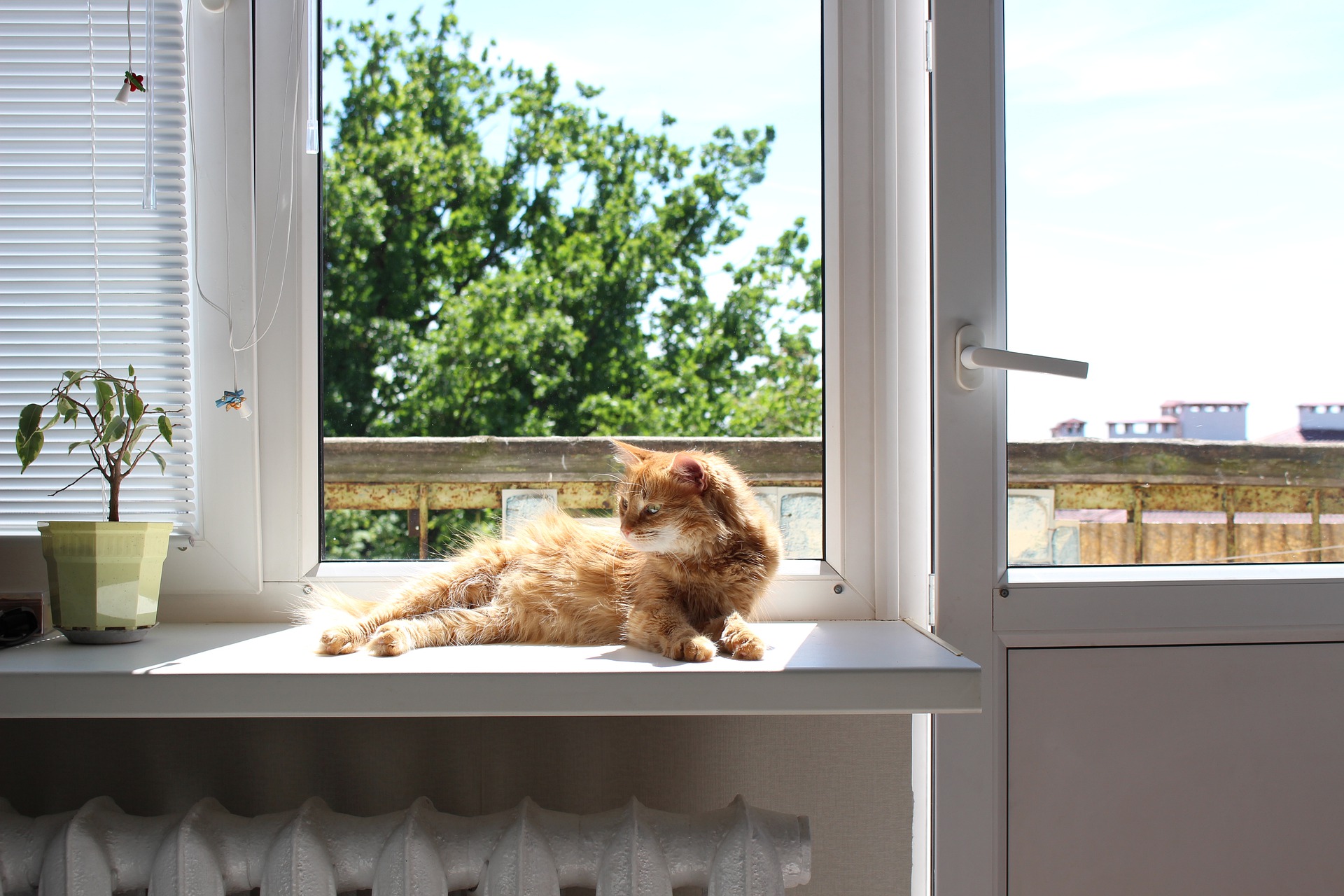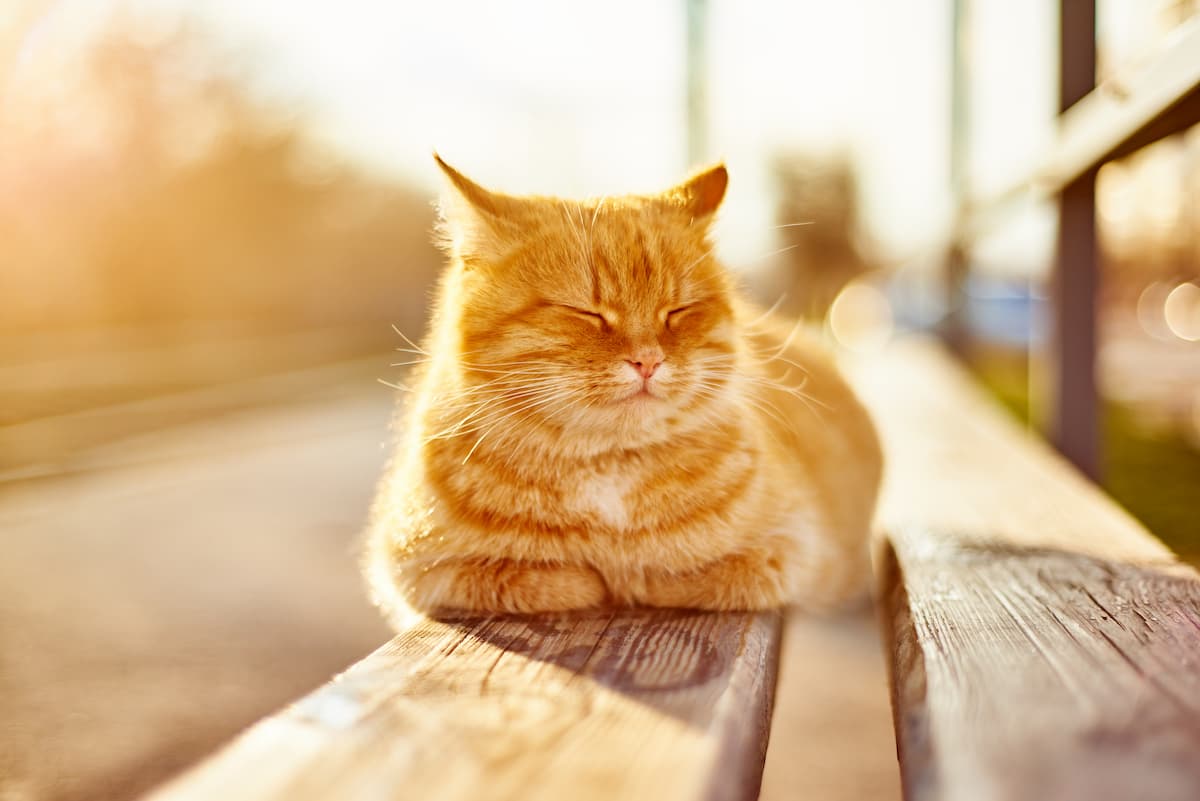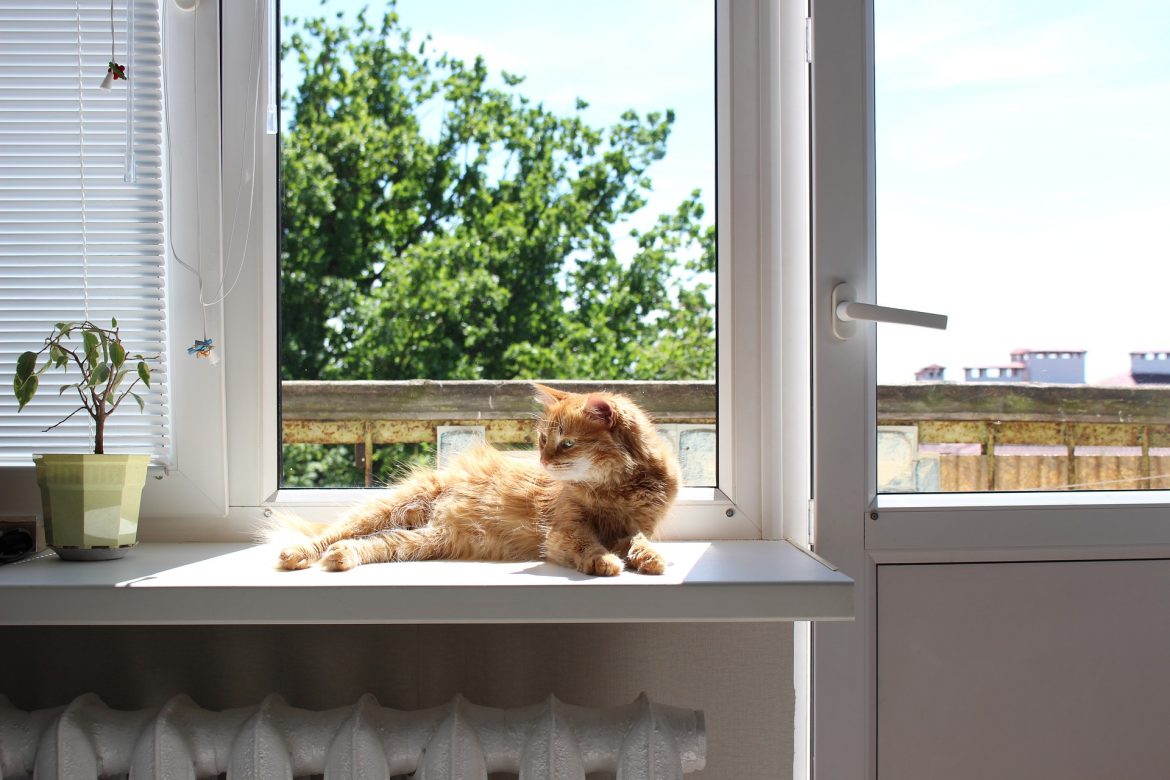While cats might have a reputation as desert animals, that doesn’t mean they tolerate heat better than people. In fact, as cats only sweat through their footpads, they can be susceptible to heatstroke. Rising temperatures mean risks for cats, so what should you know about heatstroke in cats and how to prevent it?

What is heatstroke in cats?
Heatstroke in cats is a very serious and life-threatening condition. In fact, heatstroke can cause damage to your pet’s internal organs, sometimes to the point where they stop functioning. This requires urgent treatment before it becomes fatal.
Heatstroke is a state of hyperthermia, which means an elevation in body temperature. While the ideal temperature in cats can vary, heatstroke is typically associated with a temperature of above 40°C. Heatstroke can come from overexertion, exposure to a hot environment, humidity, and poor ventilation. Unfortunately, it can happen more quickly and more often than you might think.
The causes of heatstroke in cats
Heatstroke in cats happens less often than it does in dogs. However, during the summer it can be more common than you might think. After all, cats can find themselves:
- Trapped in a clothes dryer, shed, garage, or other types of structures during a hot period
- Left confined without ready access to water and shade
- Left in a hot car for a prolonged period of time (eg. a long-distance drive)
There are other factors to consider too, such as:
- Obesity
- Cat breed (eg. Persian and Himalayan cats)
- Breathing difficulties/respiratory disease
- Heart problems/ cardiovascular disease
- Neurological disease
- Aged extremes (young or old)
- Thick/long hair coat
- Excessive exercise
- Dehydration
 Symptoms of heatstroke in cats
Symptoms of heatstroke in cats
Worryingly, cats can be very good at hiding health problems. This means that on especially hot days it’s important to stay vigilant. Make sure you have eyes on your cat (so you know they’re not trapped somewhere without water) and look for the following symptoms:
- Panting
- Sweaty feet
- Increased heart rate
- Breathing distress
- Disorientation/delirium
- Vomiting
- Agitation/restlessness
- Lethargy
- dizziness/staggering
- Drooling or thick/sticky saliva
- Bright red tongue/mouth
- Rectal temperature above 40 degrees
- Little to no urine production
- Muscle tremors
- Seizures
- Collapsing
- Unconsciousness
If you suspect your cat may be suffering from heatstroke, contact your vet immediately and seek help.
Preventing heatstroke in cats
Here are some things that you should consider to help your feline companion avoid heatstroke.
- Provide plenty of fresh, clean drinking water at all times. Since water will evaporate faster in summer – and your cat might be disinclined to trek around the house – keep several bowls of water throughout your home.
- Have a cool, well-ventilated space for your cat. Good ventilation is crucial because many animals lose heat by panting (otherwise known as evaporative cooling) which relies on good airflow. You may also choose to darken a few rooms by closing the curtains.
- If you have an outdoor cat, they should have access to shade. Remember, though, that the sun moves throughout the day. They should also have a wet towel to lie on.
- Avoid pet exercise in hot weather. Sunrise and sunset are the most appropriate times to exercise a pet during summer.
- Never leave your cat in a car. Temperatures rise extremely quickly, even on mild days.
Still having trouble?
If, despite your best efforts, you suspect your cat does have the early signs of heatstroke, act with the following:
- Move your cat into a safe, shady, or air-conditioned environment. Put a cool, wet towel or blanket underneath them.
- Offer small amounts of water frequently. Add some tuna water or chicken stock to the water to encourage them to drink.
- Measure rectal temperature with a thermometer and lubricant. If their temperature is above 40°C (104 °F), begin cooling by gently spraying cool (not cold) water over their body. Blow a fan over your cat for added effect. Stop cooling when your cat’s temperature reaches 39.7°C on the thermometer.
- Take your cat for veterinary evaluation and care. Ideally, pre-cool your car and call ahead to let the vet know you’re coming.
Vets are trained to assess the severity of the heatstroke and will provide emergency medical treatment if required. They will check your cat’s body temperature and vital signs and may:
- Put your cat on a drip (intravenous fluids)
- Administer a cooling treatment eg. cooling enema
- Provide supplemental oxygen
- Take a blood test to check organ function
- Administer medication
- Suggest ongoing monitoring and treatment
Just because our cats can’t complain about extreme summer heat doesn’t mean they’re not feeling the same exhaustion, discomfort, and general sickness we humans are. At times, simply being hot crosses the line into overheating. The sooner you recognise this, the better you can protect your cat.
Luke Fitzpatrick has been published in Forbes, Yahoo! News and Influencive. He is also a guest lecturer at the University of Sydney, lecturing in Cross-Cultural Management and the Pre-MBA Program.


1 comment
I like the efforts you have put in this, regards for all the great content.